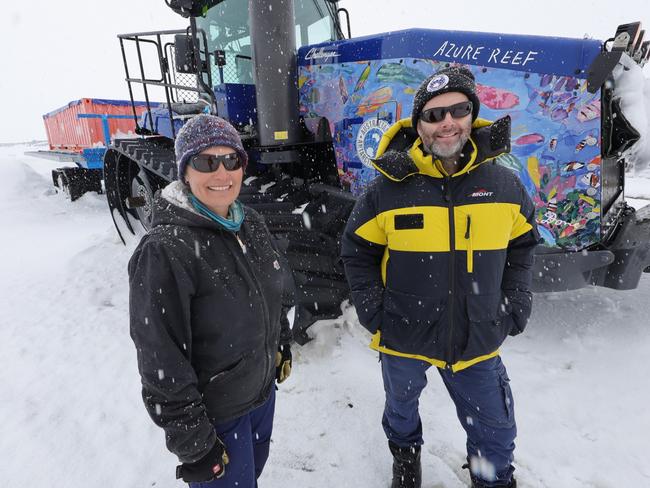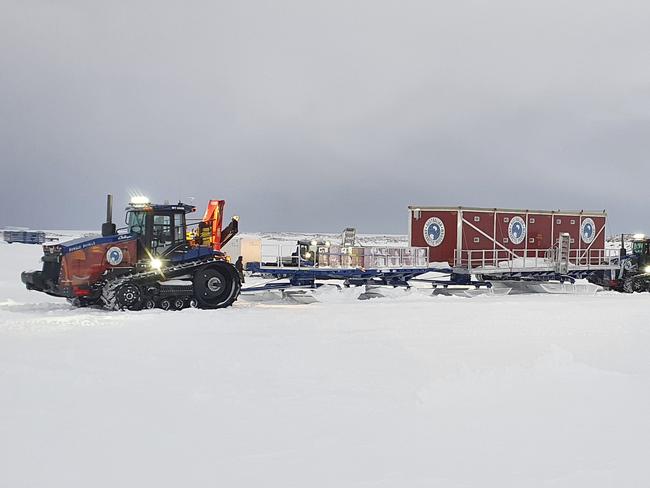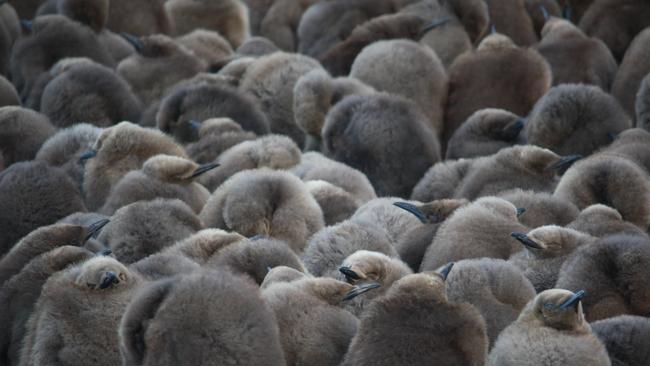2022-23 Antarctic season: Ambitious polar voyage to drill for million year ice core
It’s being described as one of the most important polar science missions ever undertaken by Australia and this summer the million-year ice core project officially kicks off.
Tasmania
Don't miss out on the headlines from Tasmania. Followed categories will be added to My News.
IN one of the most ambitious polar science missions ever attempted by Australia, a team of intrepid explorers will this summer penetrate into Antarctica’s mysterious deep east in search of a one-million-year-old ice core.
Late next month, 10 expeditioners will set out on a 1200km journey from Casey Research Station to Little Dome C, sitting high up on the Antarctic plateau.
If anything needs to go right during the 2022-23 Antarctic season, it’s this mission. Because if successful, it could hold the key to answering some of the most confounding questions about climate change and its impact on the world.

Traverse leader Sharon Labudda, 48, who spoke to the Sunday Tasmanian via phone from Casey, said it could take two weeks to reach Little Dome C – or potentially longer, depending on the weather.
Once there, the team will set up a camp to support an operation to drill for an ancient ice core.
“I’m definitely excited,” Ms Labudda said. “Being a little bit nervous is always good about anything, I think.”
“The way I see it is to take every day as it comes.
“In Antarctica, you can do as much planning as you want, but you’ve always got to be prepared that anything can come at you. Down here they call it the ‘A factor’ – the Antarctic factor.
“So you’ve got to be prepared to change your plans. At the end of the day, safety is the biggest thing. You want to stay safe and keep everyone safe and do the best you can.”
Labudda, who started working for the Australian Antarctic Division [AAD] 20 years ago, will be joined on the epic voyage by scientists, mechanics, and a doctor. They will take with them a convoy of five tractors, two snow groomers, and 14 sleds loaded with containerised living vans, generators, fuel, and cargo.

As she listened to the scientists discuss the scale of the drilling project, and the potential significance of what it might uncover, Labudda said it was hard not to get swept up in all the excitement.
“I think we’ll be drilling down to around 3 kilometres deep,” she said. “So even from my side, thinking about the logistics to do with that, getting three kilometres of ice core back to their lab to have it analysed – it’s incredible.”
AAD chief scientist Professor Nicole Webster said the million-year ice core project was “one of the most important polar science quests ever undertaken by Australia”.
“Once the summer camp is established, drilling deep enough to find ice at least a million years old will take five years,” she said.
“This record will help explain why the cycle of ice ages changed from a regular 41,000-year cycle to an ice age every 100,000 years.
“Australia is a science leader in East Antarctica and we’re extending our reach into the continent to expand our knowledge of how ice sheets are responding to climate change and the role of Antarctica in the global climate system.”
This Antarctic season will also see Australia re-establish a deep field camp at Edgeworth David Base, located 440km west of Casey, near Denman Glacier.

Charlton Clark, the AAD’s general manager operations and safety, said the base would support a three-year science campaign spearheaded by the AAD together with its research partners Securing Antarctica’s Environmental Future, the Australian Antarctic Program Partnership, and the newly established Australian Centre for Excellence in Antarctic Science.
He said the coalition of researchers would be relying on the work carried out this summer by a “small advance team”, consisting of just five people, including carpenters, a field training officer and a field leader. They will spend three months at Edgeworth David Base, preparing research facilities.
“Their work preparing facilities will be absolutely critical when up to 40 scientists arrive in late 2023. Once there the scientists will undertake research into climate issues impacting the glacier and the wider region,” Mr Clark said.
A total of seven ship voyages will be undertaken in the 2022-23 Antarctic season, carried out by two chartered vessels: the icebreaker MPOV Aiviq and the cargo ship Happy Diamond.
The state-of-the-art new icebreaker, RSV Nuyina, is expected to be returned from Singapore, where it has been undergoing maintenance, in the “first quarter” of 2023, according to Mr Clark.
Fears for penguin’s future
An island stronghold for the world’s second largest species of penguin could be on the decline, according to a new study that analysed chick numbers over the past 15 years.
The research – a collaboration between the Institute for Marine and Antarctic Studies, the Tasmania Parks and Wildlife Service (PWS), and the Australian Antarctic Division – found that the population of king penguins on Macquarie Island was slowly dwindling.

It comes after the publication of another recent IMAS paper showing there had been a significant decline in gentoo penguins on the subantarctic island.
Macquarie Island is home to about 10 per cent of the world’s king penguin breeding pairs and is the sole breeding ground for the species in the Pacific sector of the Southern Ocean.
Lead author of the study, Penny Pascoe, said she and her IMAS colleague, Dr Julie McInnes, had examined the data and censuses conducted over the last century to track the current trajectory of chick numbers and identify the environmental variables that could be affecting them.
“We’d need longer term data to work out if [this is] actually the population now reaching a carrying capacity or if it is actually in decline,” she said.

Ms Pascoe said years with lower numbers correlated with higher rainfall events and wave height during incubation, as well as more storm events and warmer sea surface temperatures in foraging areas.
The king penguin population on Macquarie Island was decimated over the course of the 19th century and into the early 20th century, as sealers boiled them for their oil. But protective measures were put in place in the 1930s, making the island a sanctuary and leading to an exponential increase in chick numbers.
But Dr McInnes said that since the PWS began conducting an annual census of king penguin chicks in 2007, a gradual decline had been observed.
“There’s obviously things happening on the island that we’re not fully aware of or in the waters surrounding Macquarie Island,” she said.
“These are all little pieces of the puzzle … that give us a bigger picture understanding of what might be happening to the ecosystems down there in different conditions.”





